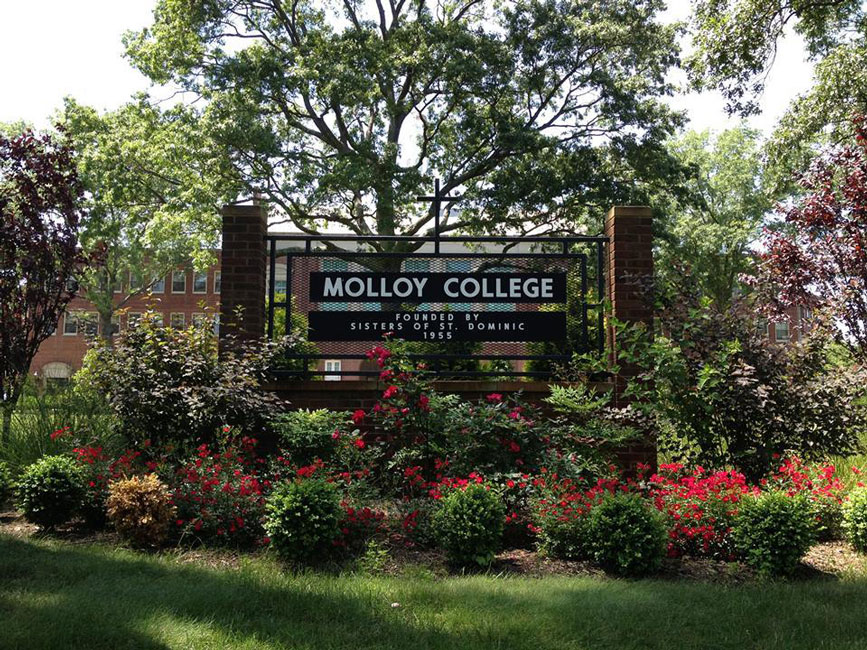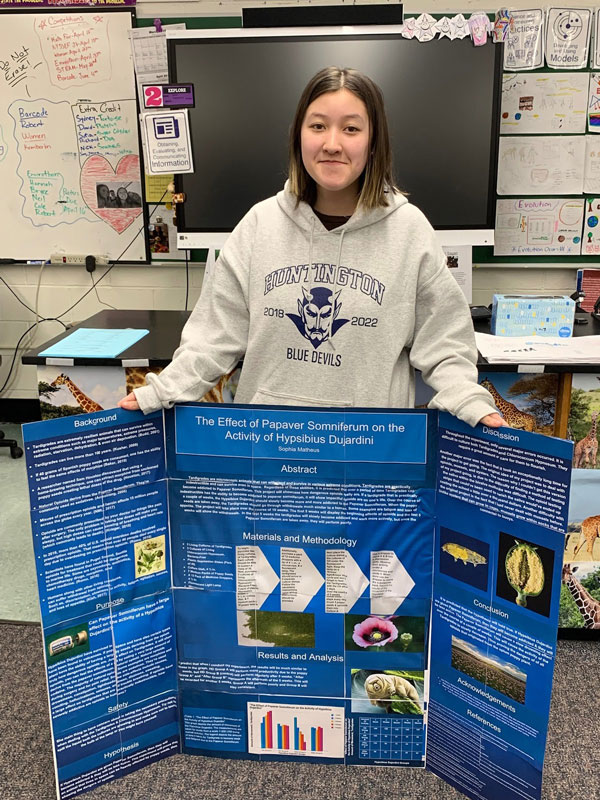The Molloy College science fair in Rockville Centre has been posing a stiff challenge to Huntington High School science research program students for many years. The most recent edition continued this long tradition.
Huntington High School’s science research program and research club have attracted dozens of students on every grade level who work individually or collaboratively on high-level academic pursuits.
Huntington students also enjoy presenting their research findings at contests and competitions. It’s a fun, but pressure-filled experience for the teenagers. After many months of research, it’s a thrill to finally be able to create a project display board and settle upon a polished presentation for judges. But answering probing questions, explaining research protocols and being challenged on findings can lead to tense situations.
The Huntington contingent that travelled to Molloy College included a mix of veterans and science research program newcomers. The event has always drawn well-presented projects and the 17th annual edition was no different. Projects covered chemistry, physics, ecology, biology and environmental sciences.
Sophia Matheus described her experience as “riveting,” while Nina Varvatsas said that her time at the fair was “great.” Their classmates echoed the pair’s feelings.
“The way everything was set up for this competition was great,” Shannon Kehoe said. “It was nice to listen to the other projects in my room and learn off of them.”
Emily Roberts said she, too, had a positive experience presenting her project and findings. “It was kind of scary being by ourselves, but I liked learning from other people’s presentations,” Ms. Roberts said. “It was a little weird being in a small classroom with 15 other people and three judges, but it was fine.”
Seniors Ryan Hoffmann and Arashdeep Singh attended the Molloy science fair two years ago and they recall their experiences in much the same way the current Huntington underclassmen do. The duo said they enjoyed what Molloy was able to teach them about science research and how it helped introduce them to the world of science competitions.
Ms. Varvatsas and Ms. Roberts researched autonomous sensory meridian response, while Ms. Kehoe studied hormesis and how different doses of radiation can affect the growth of radishes.
Ms. Mateus focused her project on studying the effect of Papaver Somniferum on the activity of Hypsibius Dujardini. “Basically, I tested to see how crushed up poppy seeds affected Tardigrades,” she said. “I wanted to find out whether they’d become addicted and suffer withdrawals.”
Since those earliest days at Molloy, Messrs. Hoffmann and Singh have grown by leaps and bounds in their research skills. As underclassmen, they developed a project on bluegills and aquaponics systems and learned enough from their experience at Molloy to expand on the research the following year.
The pair’s advice for future Huntington students participating in the Molloy science fair is to “go into it knowing there are no losers and that designing a project and being able to present it already makes you a winner, especially since many students don’t even participate in the science research program,” Mr. Singh said.
Ms. Roberts encourages future participants to “not be nervous because everyone else is nervous and you can tell by how they presented,” she said. “Molloy was just for learning and wasn’t really a competition because there were no winners so there’s no reason to be scared.”
Ms. Matheus said participants should “take your time when presenting” while Ms. Kehoe said that incoming research students should remember “to make sure they have extra knowledge to answer the judges questions and that everyone else there is nervous not just you.”
The Huntington science research program participants sometimes find the Molloy science fair to be a daunting first contest, but all of them walked away with ideas on how to improve their presentation skills and new project ideas.
By the end of the long day every Huntington participant had presented their project to at least three judges, showcasing their work and explaining their findings.
Underclassmen in Huntington’s science research program are now turning their attention to future projects during remaining class time. Students are looking to broaden their interests and delve into new scientific areas. They are evaluating research opportunities and in some cases forming research teams. Some plan to engage in research over the summer.
(Huntington senior Arashdeep Singh contributed reporting to this story.)



